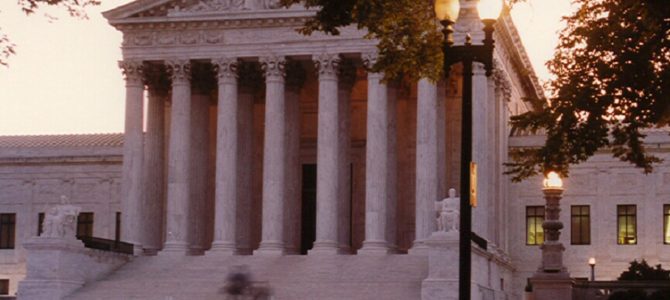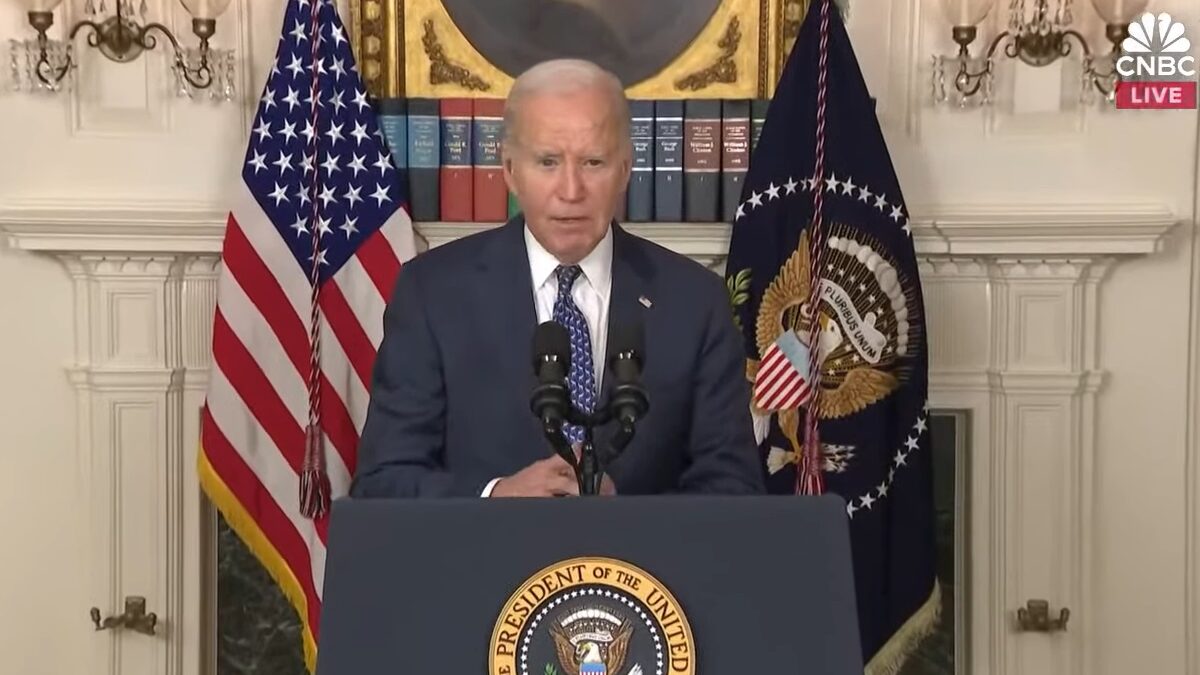
In a case that might appear to have no bearing on the right to abortion, a U.S. Supreme Court justice may have signaled a willingness to overturn Roe v. Wade.
In Ramos v. Louisiana, the U.S. Supreme Court ruled 6-3 that criminal defendants must be convicted by unanimous state juries, overturning a Louisiana murder conviction based on a 10-2 jury verdict. This decision overturns the court’s 1972 ruling in Apodaca v. Oregon, which held there is no right to a unanimous jury verdict in state courts.
Under the Sixth Amendment to the U.S. Constitution, criminal defendants have the right to a unanimous jury verdict. Yet in Apodaca the court said this only applies to federal jury trials, and Oregon’s law permitting non-unanimous convictions in state court is not a due process violation.
As of 2020, only Louisiana and Oregon permitted convictions by majority vote. (In 2018, Louisiana amended its state constitution to require unanimous verdicts, and this change went into effect for criminal trials after January of 2019.) But as the court noted in Ramos, states like Louisiana and Oregon started to permit jury verdicts by majority vote in the late 1800s to suppress minorities, and to disenfranchise jurors who were black or religious minorities. The court further noted these changes were supported by the Ku Klux Klan.
Erroneous Precedents
The Ramos dissent, written by Justice Alito and joined by Chief Justice John Roberts and Justice Elena Kagan, insisted that the legal principle of stare decisis should have restrained the court from overturning Apodaca. Stare decisis safeguards precedent and promotes a stable, evenhanded legal system. Justice Kavanaugh agreed in his concurring opinion, quoting the famous legal commentaries of 18th century English jurist William Blackstone, who said “it is an established rule to abide by former precedents” and “not waver with every new judge’s opinion.”
But Kavanaugh argued that stare decisis has never required the court to uphold “erroneous precedents.” Underlining the distinction, Kavanaugh cited perhaps the most famous instance of the Supreme Court overturning a former precedent, when in 1955 Brown v. Board of Education effectively overturned the 1896 case of Plessy v. Ferguson. Plessy had upheld the constitutionality of “separate but equal” standards for public facilities, thus permitting racial segregation. Brown rejected Plessy, holding that state laws imposing racial segregation of public schools are a violation of the Equal Protection Clause of the Fourteenth Amendment.
Kavanaugh further listed more than two dozen other instances in which the court overturned former precedent, including the 1992 ruling in Planned Parenthood v. Casey. In a footnote, Kavanaugh reminded the court that Casey may have reaffirmed Roe’s “central holding” but “expressly rejected Roe’s trimester framework.”
That “essential holding” consists of women having a right to choose abortion before the infant is considered “viable.” States may not place an “undue burden” on this right, but they can restrict this right after viability (provided exceptions exist to protect the mother’s life and health). States also reserve a legitimate interest in protecting the health of the mother and the infant.
Roe had forbidden state regulation of abortion during the first trimester, allowing regulations to protect a woman’s health during the second, and regulations to protect a “viable” infant’s health in the third (provided exceptions existed to protect the mother’s life and health).
Yet fewer than 20 years after Roe, Casey acknowledged that medical technology moved the goalpost on viability, or when an infant can survive outside the womb, previously believed to be 28 weeks. By 1992, an infant could be considered viable at 23 weeks. Today, the American Association of Pro-Life Obstetricians and Gynecologists say an infant may survive if delivered at 20 weeks post-fertilization.
Medical technology continues to reveal the marvels of life in the womb. In a day when fetal heartbeats can be detected by ultrasound at six weeks, 1973 feels like the dark ages.
All Human Beings Are Persons
But even in 1973, we did not need an ultrasound to know that infants in the womb are in fact human beings. We also knew that the Fourteenth Amendment, adopted in 1868, guarantees due process and equal protection to all “persons.”
Are some human beings not “persons”? On second look, Roe begins to feel exactly like Plessy and Apodaca. Perhaps worse.
Justice Clarence Thomas—the only current Supreme Court justice who was also a member of the Casey court—joined the dissent in Casey that favored overturning Roe and rejecting the so-called right to abortion. Thomas also joined the majority in Ramos, prohibiting state jury laws, in part due to their manifestly racist intent.
In 2019, Thomas recalled how the court in Roe had based its reasoning on the bigoted eugenics movement. As Thomas noted, Planned Parenthood founder Margaret Sanger explicitly promoted abortion as a way to rid society of children with “unwanted characteristics” like “morons, feeble-minded, [and the] insane” and children of social classes prone to criminal behavior. Indeed, Sanger called the eugenics movement a program for “racial betterment.”
Sanger was not an isolated or extremist voice for racial superiority among the pro-eugenics movement. Her contemporaries included men like Glanville Williams, a legal scholar and early member of the Eugenics Society whom the Roe court directly cited.
Writing the majority opinion, Justice Blackmun cited Williams’ book, “The Sanctity of Life and the Criminal Law.” In this book, Williams wrote: “an eugenic killing by a mother, exactly paralleled by the bitch that kills her misshapen puppies, cannot confidently be pronounced immoral.”
Roe’s Brown v. Board of Education?
In March, the court heard oral arguments in the case of June Medical Services v. Russo, which is the first abortion-related case for Justices Kavanaugh and Neil Gorsuch. It has been suggested that the upcoming decision may further chip away at or even overturn Roe.
Kavanaugh agreed in his Senate confirmation hearings that Roe is indeed “precedent.” Yet by his own reasoning in Ramos, the court sometimes reaches “erroneous” precedents that mask bigoted policies.
Brown and Ramos each corrected certain erroneous precedents. We no longer live under Plessy’s “separate but equal” regime, and we no longer tolerate disenfranchising minorities with non-unanimous jury verdicts. If we can throw off the shackles of Plessy, and own up to the bigoted history leading up to Apodaca, why should the depraved thinking of eugenicists remain forever enshrined under constitutional law?
Today, the unborn lack the attendant legal rights of personhood under the Fourteenth Amendment. The core sophistry of Roe and Casey is to say that certain humans are not “persons.”
Yet when the Fourteenth Amendment was adopted after the Civil War, 28 states considered abortion an offense against a “person.” There is no doubt that “human being” and “personhood” held interchangeable definitions in 1868, both in fact and in law.
The only way we ended up with the cruel legalisms of Roe, 100 years later, is by the same kind of ugly bigotry that kept emancipated slaves and their descendants from the full rights of personhood during most of that same period. It took the civil rights movement—Brown v. Board of Education and the Civil Rights Act—for descendants of slaves to begin enjoying the fullness of their rights guaranteed under the Fourteenth Amendment.
When will the unborn get their Brown v. Board of Education?









